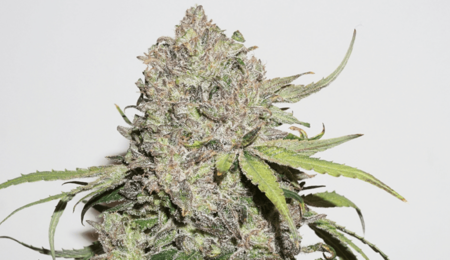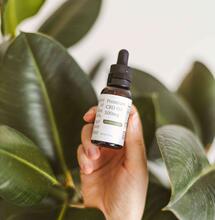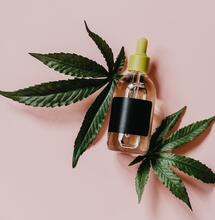CBD. What we know so far
13 Jul 2018

Cannabidiol, or CBD, is one of the more interesting stories in recent cannabis genetics. What makes it especially interesting is the fact that just 10 years ago most of the cannabis community hadn’t heard too much about CBD. Nowadays, CBD has acquired main stream approval, it is often available on high street health stores. The lack of psycho activity hasn't held back CBD’s popularity. In fact, the lack of psycho activity may partly explain the popular appeal.
There’s no doubt about it. CBD has some compelling medical uses. Lots of people grow their own CBD-rich cannabis these days and report great feedback in conditions as diverse as MS, Crohns, Parkinsons, Arthritis and many other ailments. But there is one thing that isn't said too much about CBD. It’s not for everyone. Some people love the effects of CBD and some people wonder what all the fuss is about. The main disappointment often comes from recreational smokers that are looking for a strong high. Thats one thing that you don't usually get from a CBD variety. But the presence of CBD in the buds does, according to many, offer a more rounded and enjoyable smoking experience. Some old-school cannabis lovers say that the presence of some CBD in the smoke allows them to enjoy a deeper body stone, more akin to the smokes of the 1970’s.
 Which raises the question, how much CBD qualifies a variety as CBD-rich? In the breeding industry, a variety with 4% or more CBD in the dried buds qualifies as a CBD rich variety. Compare this with a typical THC rich variety that you can buy from many of the seed companies. Many of these varieties will register around 0.2% CBD or below. Was the ‘average’ weed of the 1970’s richer in CBD than it is today? or is that a myth? Without extensive analytical records we will never know for sure. But CBD is making its way back, perhaps we can expect to see more CBD in future varieties. Feedback from some of the better USA dispensaries suggests that the presence of CBD helps make a variety more appealing to the public.
The most popular CBD varieties offer a 1:1 ratio of THC:CBD. Often that means around 10% of both THC and CBD. Such varieties often have a somewhat less ‘heady’ high but a stronger and deeply pleasurable body stone. CBD fans often report that CBD enables them to retain a strong mental focus and clarity of thought. But the main physical benefits of CBD seem to be the relief from medical symptoms and pain killing properties. Many of those that consume CBD rich cannabis are repeat growers, they find that a particular CBD variety (e.g. indica or sativa) that suits them and they keep a mother plant in their grow room.
New CBD-only varieties are also starting to appear such as CBD Charlotte’s Angel from Dutch Passion, with around 15% CBD and 0.2% THC. Such varieties are popular in paediatric applications because they don't get you remotely high. They are also finding a surprising use with recreational consumers, the CBD-only varieties look, smell and taste the same as a THC rich variety. And when you smoke/vape some it quenches the craving for a traditional THC rich. It’s a handy way to reduce your cannabis tolerance.
The creation of CBD rich varieties is achieved through selective breeding. This requires analytical measurements of all the parent plants being considered for breeding. Its the modern way to breed, and a great way of complementing the breeders instinct. It has been estimated that 1 in 400 cannabis plants is naturally CBD rich, so you may have already enjoyed some without realising it, perhaps noticing a more pleasurable body stone than usual.
Which raises the question, how much CBD qualifies a variety as CBD-rich? In the breeding industry, a variety with 4% or more CBD in the dried buds qualifies as a CBD rich variety. Compare this with a typical THC rich variety that you can buy from many of the seed companies. Many of these varieties will register around 0.2% CBD or below. Was the ‘average’ weed of the 1970’s richer in CBD than it is today? or is that a myth? Without extensive analytical records we will never know for sure. But CBD is making its way back, perhaps we can expect to see more CBD in future varieties. Feedback from some of the better USA dispensaries suggests that the presence of CBD helps make a variety more appealing to the public.
The most popular CBD varieties offer a 1:1 ratio of THC:CBD. Often that means around 10% of both THC and CBD. Such varieties often have a somewhat less ‘heady’ high but a stronger and deeply pleasurable body stone. CBD fans often report that CBD enables them to retain a strong mental focus and clarity of thought. But the main physical benefits of CBD seem to be the relief from medical symptoms and pain killing properties. Many of those that consume CBD rich cannabis are repeat growers, they find that a particular CBD variety (e.g. indica or sativa) that suits them and they keep a mother plant in their grow room.
New CBD-only varieties are also starting to appear such as CBD Charlotte’s Angel from Dutch Passion, with around 15% CBD and 0.2% THC. Such varieties are popular in paediatric applications because they don't get you remotely high. They are also finding a surprising use with recreational consumers, the CBD-only varieties look, smell and taste the same as a THC rich variety. And when you smoke/vape some it quenches the craving for a traditional THC rich. It’s a handy way to reduce your cannabis tolerance.
The creation of CBD rich varieties is achieved through selective breeding. This requires analytical measurements of all the parent plants being considered for breeding. Its the modern way to breed, and a great way of complementing the breeders instinct. It has been estimated that 1 in 400 cannabis plants is naturally CBD rich, so you may have already enjoyed some without realising it, perhaps noticing a more pleasurable body stone than usual.
 One other interesting new area highlighted by CBD breeding has been the other minor cannabinoids. As CBD rich cultivars have been created, breeders began to notice that some plants would register a slightly higher level of one of the other cannabinoids. Some clever and extremely patient breeding over many generations is starting to close in on varieties rich in THCV, CBDV and CBG. Stabilising the cannabinoid levels in these new varieties is the challenge, and in 2018 you may start to see the first of the ‘new’ cannabinoid rich varieties appearing. Only time will tell what the effects and uses will be. But if they have even a fraction of the popularity of CBD then the next few years will be fascinating as yet more of cannabis’s potential is gradually unlocked.
Recreational cannabis consumers are starting to enjoy the full-spectrum cannabinoids offered by some of the better cannabis varieties. Many people expect that traditional THC-rich varieties will retain their 20%+ THC levels in years to come. But the breeders are hoping to improve the smoking experience by delivering higher levels of the full spectrum of cannabinoids. That would include CBD and the others. The levels are unlikely to be anywhere near the THC levels, but they would still be sufficient to improve the quality and depth of the recreational high. Again, it’s work in progress and something for the future. But cannabis breeding is moving along at quite a pace these days, and the influence of the USA medical market is increasing the momentum.
It’s worth adding that the breeders are seeing that environment is critical to allow the genetics to reach their potential. Cuttings from the same mother plant will give different cannabinoid levels under different types of grow light. More surprisingly, the respective ratios of the different cannabinoid is also affected by the type of grow light. HPS grow lights may be the most affordable lights to buy, but the spectrum was never designed for growing cannabis, it was just a cheap and convenient fit. These days better results can be had with LED grow lights which have their spectrum fine tuned for cannabis, and one reason people pay the premium price for an LED is the superior production of THC and other cannabinoids.
CBD breeding unlocked a pandoras box of potential goodies on offer from the other cannabinoids present in our beloved plant. Lets see what the breeding brings, and lets see how cannabis medicine and uses can evolve further in the coming months and years.
www.dutch-passion.com
By Tony, Dutch Passion Seed Company
One other interesting new area highlighted by CBD breeding has been the other minor cannabinoids. As CBD rich cultivars have been created, breeders began to notice that some plants would register a slightly higher level of one of the other cannabinoids. Some clever and extremely patient breeding over many generations is starting to close in on varieties rich in THCV, CBDV and CBG. Stabilising the cannabinoid levels in these new varieties is the challenge, and in 2018 you may start to see the first of the ‘new’ cannabinoid rich varieties appearing. Only time will tell what the effects and uses will be. But if they have even a fraction of the popularity of CBD then the next few years will be fascinating as yet more of cannabis’s potential is gradually unlocked.
Recreational cannabis consumers are starting to enjoy the full-spectrum cannabinoids offered by some of the better cannabis varieties. Many people expect that traditional THC-rich varieties will retain their 20%+ THC levels in years to come. But the breeders are hoping to improve the smoking experience by delivering higher levels of the full spectrum of cannabinoids. That would include CBD and the others. The levels are unlikely to be anywhere near the THC levels, but they would still be sufficient to improve the quality and depth of the recreational high. Again, it’s work in progress and something for the future. But cannabis breeding is moving along at quite a pace these days, and the influence of the USA medical market is increasing the momentum.
It’s worth adding that the breeders are seeing that environment is critical to allow the genetics to reach their potential. Cuttings from the same mother plant will give different cannabinoid levels under different types of grow light. More surprisingly, the respective ratios of the different cannabinoid is also affected by the type of grow light. HPS grow lights may be the most affordable lights to buy, but the spectrum was never designed for growing cannabis, it was just a cheap and convenient fit. These days better results can be had with LED grow lights which have their spectrum fine tuned for cannabis, and one reason people pay the premium price for an LED is the superior production of THC and other cannabinoids.
CBD breeding unlocked a pandoras box of potential goodies on offer from the other cannabinoids present in our beloved plant. Lets see what the breeding brings, and lets see how cannabis medicine and uses can evolve further in the coming months and years.
www.dutch-passion.com
By Tony, Dutch Passion Seed Company
 Which raises the question, how much CBD qualifies a variety as CBD-rich? In the breeding industry, a variety with 4% or more CBD in the dried buds qualifies as a CBD rich variety. Compare this with a typical THC rich variety that you can buy from many of the seed companies. Many of these varieties will register around 0.2% CBD or below. Was the ‘average’ weed of the 1970’s richer in CBD than it is today? or is that a myth? Without extensive analytical records we will never know for sure. But CBD is making its way back, perhaps we can expect to see more CBD in future varieties. Feedback from some of the better USA dispensaries suggests that the presence of CBD helps make a variety more appealing to the public.
The most popular CBD varieties offer a 1:1 ratio of THC:CBD. Often that means around 10% of both THC and CBD. Such varieties often have a somewhat less ‘heady’ high but a stronger and deeply pleasurable body stone. CBD fans often report that CBD enables them to retain a strong mental focus and clarity of thought. But the main physical benefits of CBD seem to be the relief from medical symptoms and pain killing properties. Many of those that consume CBD rich cannabis are repeat growers, they find that a particular CBD variety (e.g. indica or sativa) that suits them and they keep a mother plant in their grow room.
New CBD-only varieties are also starting to appear such as CBD Charlotte’s Angel from Dutch Passion, with around 15% CBD and 0.2% THC. Such varieties are popular in paediatric applications because they don't get you remotely high. They are also finding a surprising use with recreational consumers, the CBD-only varieties look, smell and taste the same as a THC rich variety. And when you smoke/vape some it quenches the craving for a traditional THC rich. It’s a handy way to reduce your cannabis tolerance.
The creation of CBD rich varieties is achieved through selective breeding. This requires analytical measurements of all the parent plants being considered for breeding. Its the modern way to breed, and a great way of complementing the breeders instinct. It has been estimated that 1 in 400 cannabis plants is naturally CBD rich, so you may have already enjoyed some without realising it, perhaps noticing a more pleasurable body stone than usual.
Which raises the question, how much CBD qualifies a variety as CBD-rich? In the breeding industry, a variety with 4% or more CBD in the dried buds qualifies as a CBD rich variety. Compare this with a typical THC rich variety that you can buy from many of the seed companies. Many of these varieties will register around 0.2% CBD or below. Was the ‘average’ weed of the 1970’s richer in CBD than it is today? or is that a myth? Without extensive analytical records we will never know for sure. But CBD is making its way back, perhaps we can expect to see more CBD in future varieties. Feedback from some of the better USA dispensaries suggests that the presence of CBD helps make a variety more appealing to the public.
The most popular CBD varieties offer a 1:1 ratio of THC:CBD. Often that means around 10% of both THC and CBD. Such varieties often have a somewhat less ‘heady’ high but a stronger and deeply pleasurable body stone. CBD fans often report that CBD enables them to retain a strong mental focus and clarity of thought. But the main physical benefits of CBD seem to be the relief from medical symptoms and pain killing properties. Many of those that consume CBD rich cannabis are repeat growers, they find that a particular CBD variety (e.g. indica or sativa) that suits them and they keep a mother plant in their grow room.
New CBD-only varieties are also starting to appear such as CBD Charlotte’s Angel from Dutch Passion, with around 15% CBD and 0.2% THC. Such varieties are popular in paediatric applications because they don't get you remotely high. They are also finding a surprising use with recreational consumers, the CBD-only varieties look, smell and taste the same as a THC rich variety. And when you smoke/vape some it quenches the craving for a traditional THC rich. It’s a handy way to reduce your cannabis tolerance.
The creation of CBD rich varieties is achieved through selective breeding. This requires analytical measurements of all the parent plants being considered for breeding. Its the modern way to breed, and a great way of complementing the breeders instinct. It has been estimated that 1 in 400 cannabis plants is naturally CBD rich, so you may have already enjoyed some without realising it, perhaps noticing a more pleasurable body stone than usual.
 One other interesting new area highlighted by CBD breeding has been the other minor cannabinoids. As CBD rich cultivars have been created, breeders began to notice that some plants would register a slightly higher level of one of the other cannabinoids. Some clever and extremely patient breeding over many generations is starting to close in on varieties rich in THCV, CBDV and CBG. Stabilising the cannabinoid levels in these new varieties is the challenge, and in 2018 you may start to see the first of the ‘new’ cannabinoid rich varieties appearing. Only time will tell what the effects and uses will be. But if they have even a fraction of the popularity of CBD then the next few years will be fascinating as yet more of cannabis’s potential is gradually unlocked.
Recreational cannabis consumers are starting to enjoy the full-spectrum cannabinoids offered by some of the better cannabis varieties. Many people expect that traditional THC-rich varieties will retain their 20%+ THC levels in years to come. But the breeders are hoping to improve the smoking experience by delivering higher levels of the full spectrum of cannabinoids. That would include CBD and the others. The levels are unlikely to be anywhere near the THC levels, but they would still be sufficient to improve the quality and depth of the recreational high. Again, it’s work in progress and something for the future. But cannabis breeding is moving along at quite a pace these days, and the influence of the USA medical market is increasing the momentum.
It’s worth adding that the breeders are seeing that environment is critical to allow the genetics to reach their potential. Cuttings from the same mother plant will give different cannabinoid levels under different types of grow light. More surprisingly, the respective ratios of the different cannabinoid is also affected by the type of grow light. HPS grow lights may be the most affordable lights to buy, but the spectrum was never designed for growing cannabis, it was just a cheap and convenient fit. These days better results can be had with LED grow lights which have their spectrum fine tuned for cannabis, and one reason people pay the premium price for an LED is the superior production of THC and other cannabinoids.
CBD breeding unlocked a pandoras box of potential goodies on offer from the other cannabinoids present in our beloved plant. Lets see what the breeding brings, and lets see how cannabis medicine and uses can evolve further in the coming months and years.
www.dutch-passion.com
By Tony, Dutch Passion Seed Company
One other interesting new area highlighted by CBD breeding has been the other minor cannabinoids. As CBD rich cultivars have been created, breeders began to notice that some plants would register a slightly higher level of one of the other cannabinoids. Some clever and extremely patient breeding over many generations is starting to close in on varieties rich in THCV, CBDV and CBG. Stabilising the cannabinoid levels in these new varieties is the challenge, and in 2018 you may start to see the first of the ‘new’ cannabinoid rich varieties appearing. Only time will tell what the effects and uses will be. But if they have even a fraction of the popularity of CBD then the next few years will be fascinating as yet more of cannabis’s potential is gradually unlocked.
Recreational cannabis consumers are starting to enjoy the full-spectrum cannabinoids offered by some of the better cannabis varieties. Many people expect that traditional THC-rich varieties will retain their 20%+ THC levels in years to come. But the breeders are hoping to improve the smoking experience by delivering higher levels of the full spectrum of cannabinoids. That would include CBD and the others. The levels are unlikely to be anywhere near the THC levels, but they would still be sufficient to improve the quality and depth of the recreational high. Again, it’s work in progress and something for the future. But cannabis breeding is moving along at quite a pace these days, and the influence of the USA medical market is increasing the momentum.
It’s worth adding that the breeders are seeing that environment is critical to allow the genetics to reach their potential. Cuttings from the same mother plant will give different cannabinoid levels under different types of grow light. More surprisingly, the respective ratios of the different cannabinoid is also affected by the type of grow light. HPS grow lights may be the most affordable lights to buy, but the spectrum was never designed for growing cannabis, it was just a cheap and convenient fit. These days better results can be had with LED grow lights which have their spectrum fine tuned for cannabis, and one reason people pay the premium price for an LED is the superior production of THC and other cannabinoids.
CBD breeding unlocked a pandoras box of potential goodies on offer from the other cannabinoids present in our beloved plant. Lets see what the breeding brings, and lets see how cannabis medicine and uses can evolve further in the coming months and years.
www.dutch-passion.com
By Tony, Dutch Passion Seed Company



